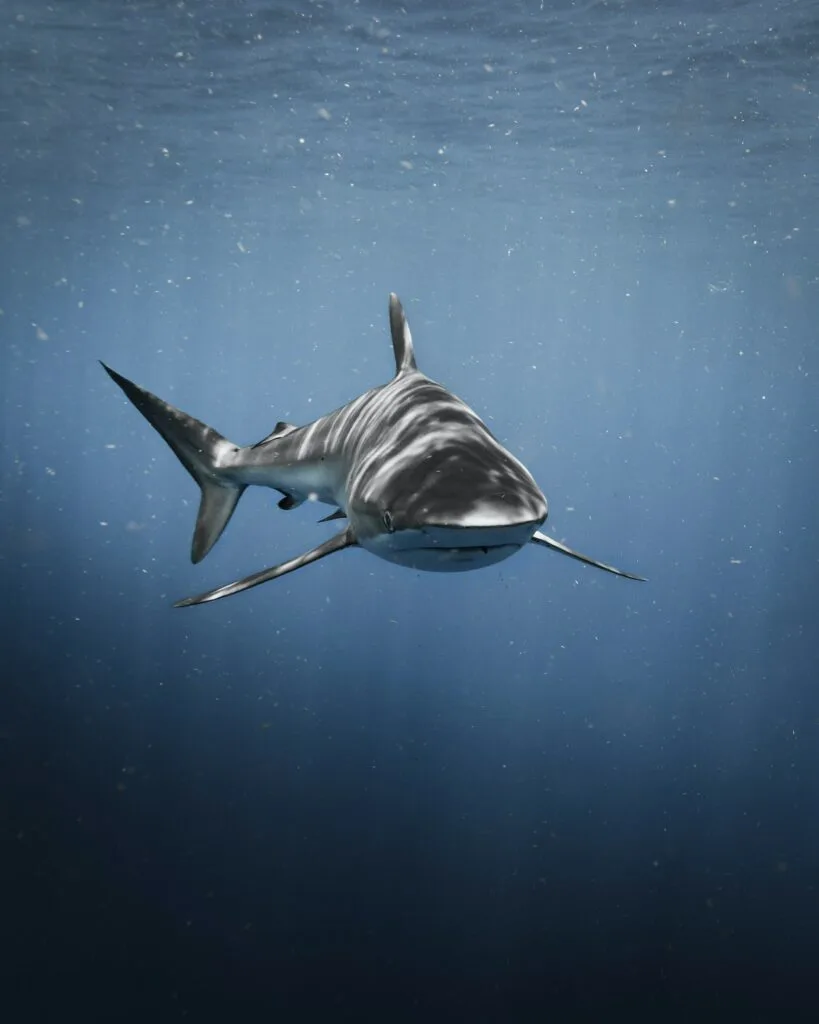Do you ever get the urge to explore and learn something new? You’re in luck! Florida is home to one of the most unique aquatic opportunities around: Bull Shark populations. That’s right, alongside manatees, dolphins, sea turtles, and other wildlife along its coasts – Florida provides a rare glimpse at some of nature’s most elusive creatures.
Whether you’ve got an experienced eye or are just looking for a fun outdoor experience with friends and family – there’s something special that comes from diving into this bustling underwater ecosystem! Let us explore what makes Bull Sharks so captivating here in Florida.

Skip ahead to any section below!
Get to Know the Bull Shark – Description and Habitat.
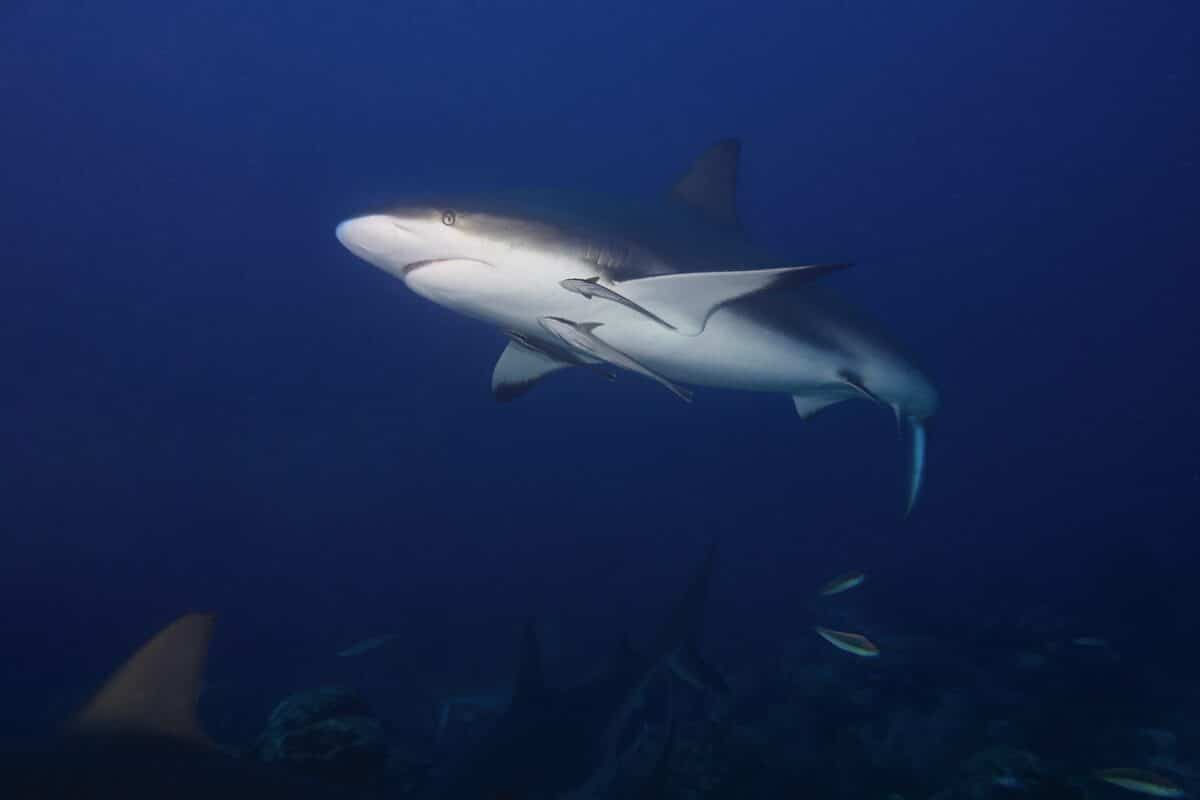
The bull shark is a fascinating species known to be one of the deadliest predators in the world. With its broad and flat snout, sharp teeth, and ability to survive in salt and freshwater environments, this species is rightly named the bull shark.
The Versatile Habitat and Wide Distribution of Florida’s Bull Sharks
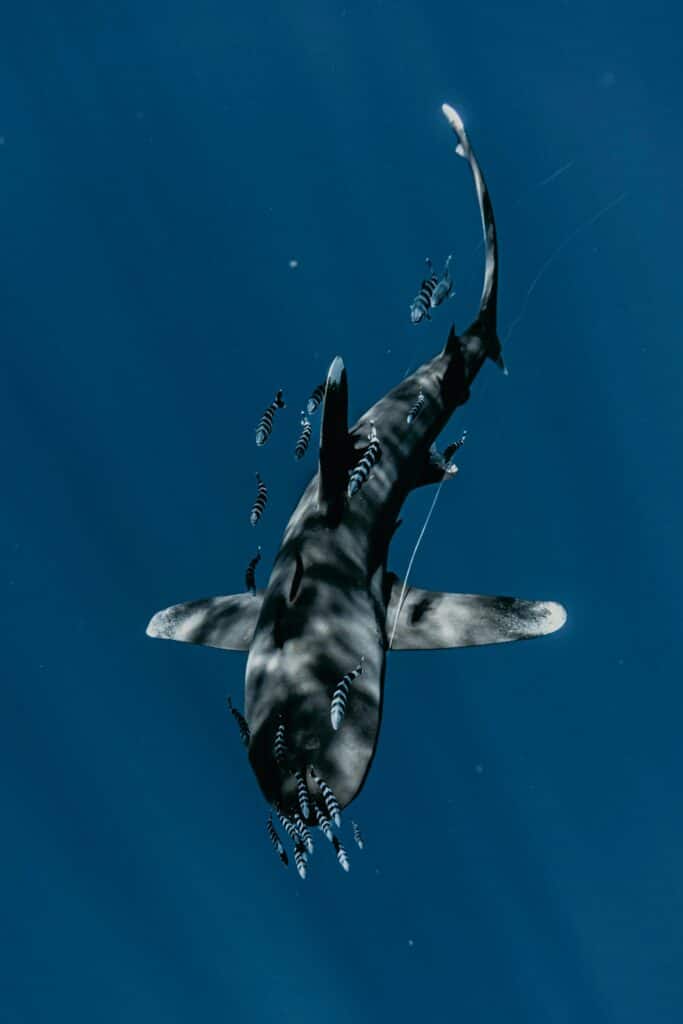
In Florida, the bull shark thrives in habitats such as estuaries, mangrove swamps, and coastal waters. Interestingly, they’ve also been known to travel up freshwater rivers like the Mississippi and have even been spotted in the Great Lakes! Due to their versatile habitat preferences, bull sharks are a common sight for anglers and beachgoers in Florida.
The Impressive Size, Diet, and Notable Behavior of Florida’s Bull Sharks
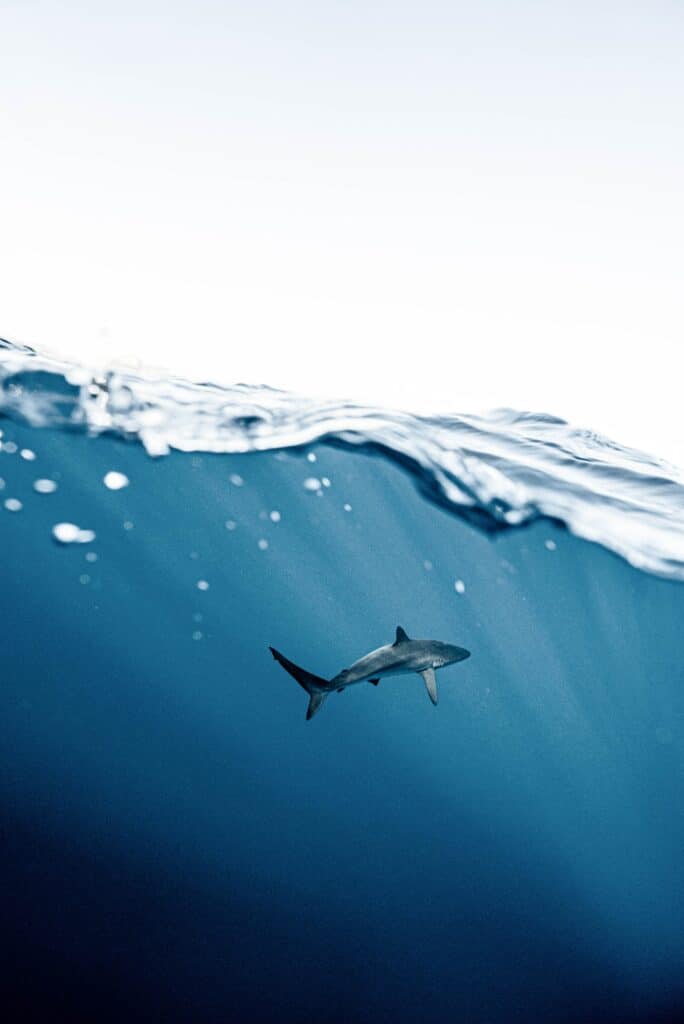
This species can grow up to 11 feet, weigh around 500 pounds, and has a lifespan of about 16 years. They’re opportunistic hunters who feed on prey, including fish, dolphins, and turtles. However, bull sharks are known for their ability to detect and attack humans, making them particularly dangerous.
How to Spot a Bull Shark in Florida
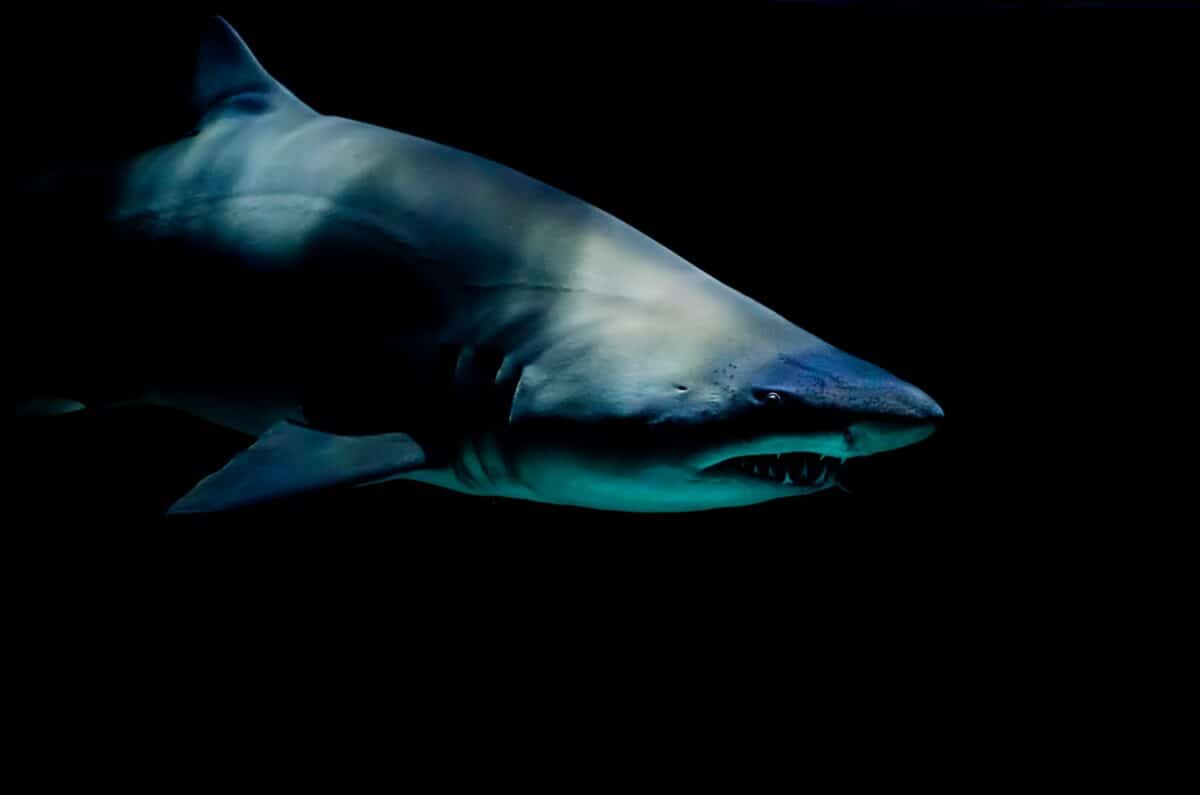
Florida’s waters are home to many sharks, but one of the most feared is the bull shark. These apex predators are infamous for their aggressive behavior, so it’s essential to know how to spot them if you plan fishing, boating, or swimming in Florida’s coastal waters.
One way to recognize a bull shark is its stocky build and blunt nose. These features give the bull shark an intimidating appearance and make them easily identifiable from other shark species. Bull sharks are often found in shallow waters near shorelines, so keep an eye out for them if you’re near the beach.
Another critical characteristic of the bull shark is the black tips on its fins. These are not always visible, but when they are, they indicate that the shark you’re looking at is a bull shark.
Check out: Discover Florida’s Most Dangerous Animals.
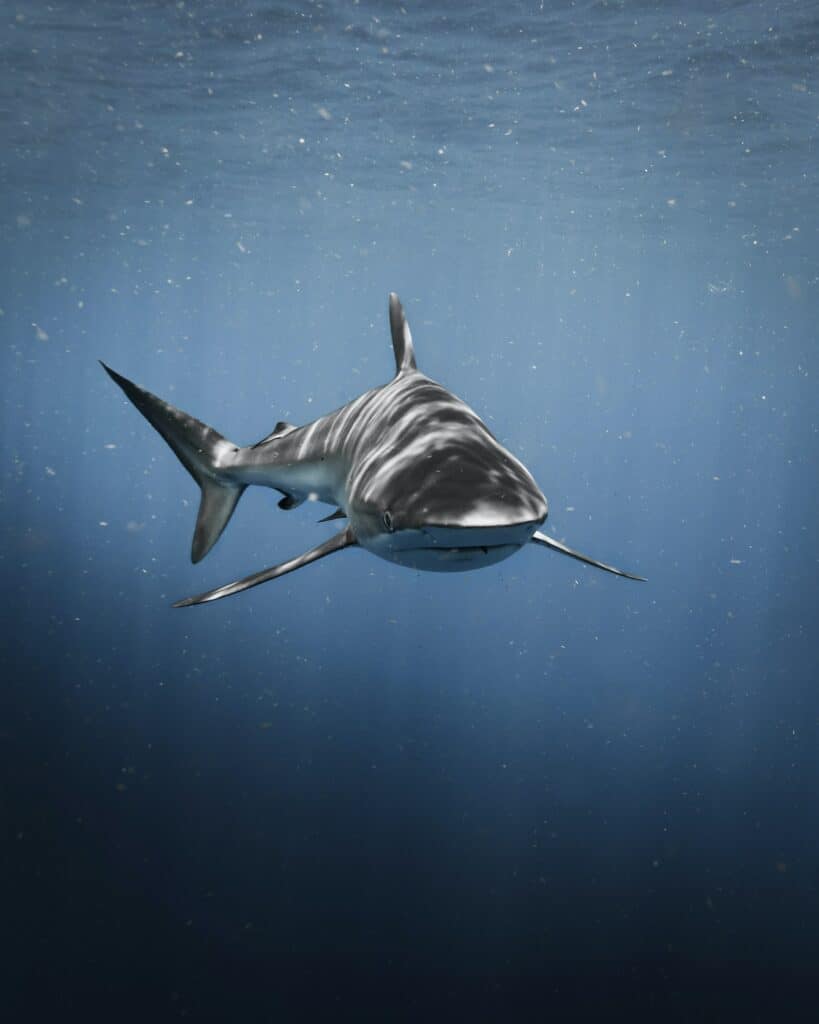
When it comes to behavior, bull sharks are known for their territorial nature and ability to adapt to various environments. If you see a shark exhibiting this behavior, giving it a wide berth and avoiding any interactions is best.
In conclusion, if you’re an angler, boater, or swimmer in Florida, you must know the dangers of bull sharks. By watching for their unique physical characteristics and being mindful of their behavior, you can stay safe while enjoying all that Florida’s waters offer.
Check out: Meet Ohio’s Predatory Coyote Population.
What to Do if You See a Bull Shark?
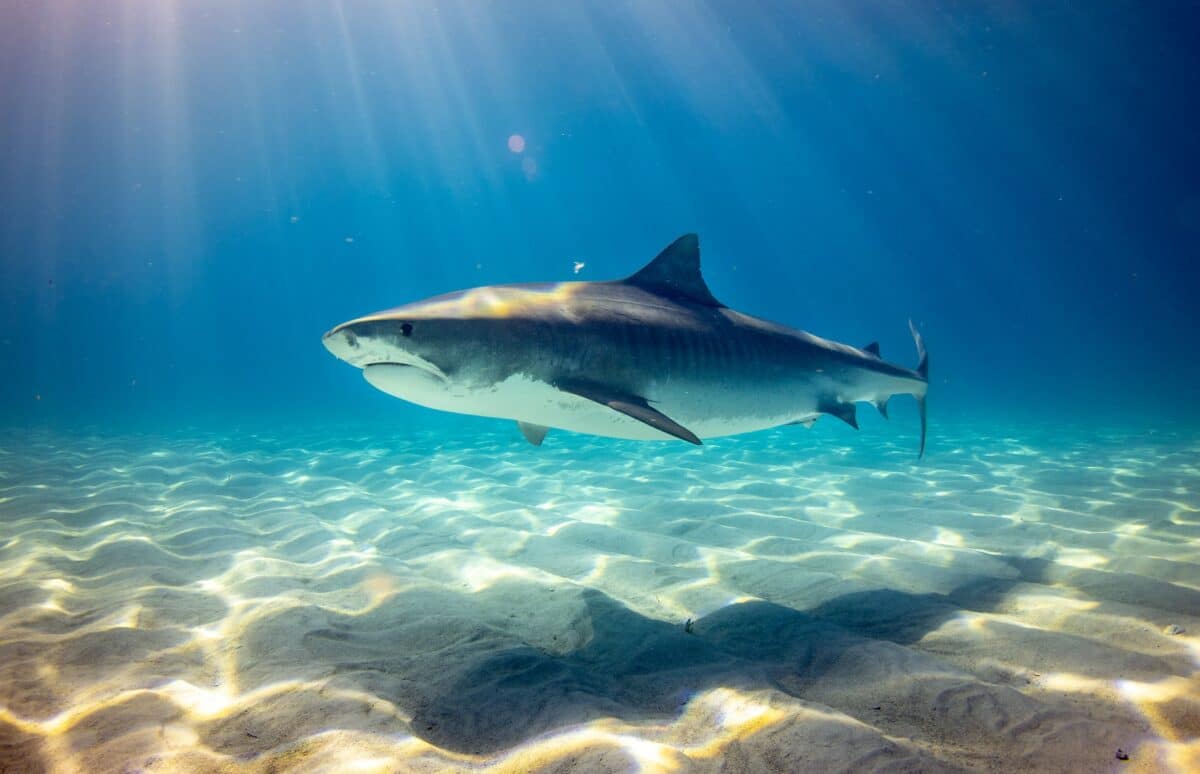
If you happen to come across a bull shark, you should first remain calm. Bull sharks are known to be aggressive but primarily attack humans out of curiosity rather than intentional aggression. It is important not to panic as this can trigger a shark attack.
Stay still and avoid sudden movements that may startle the shark. Try to maintain eye contact with the bullshark and slowly back away, keeping your eyes on it at all times. It is best to avoid swimming in waters known to contain bull sharks or in areas where there are bait fish or fishing.
Bull sharks are common in rivers and estuaries, where they tend to attack more frequently. If you find yourself in these areas, it is best to wear a wetsuit and avoid entering the water alone.
Remember, it is crucial to respect these creatures and their habitats. Sharks play an essential role in maintaining the balance of our oceans, and as humans, we are responsible for coexisting peacefully with them.
Diet, Unique Adaptations, and Hunting Techniques of Florida’s Bull Sharks
Bull sharks are known to be opportunistic feeders, meaning they will eat whatever prey is available. Their diet consists of various fish, including tarpon, snapper, catfish, crustaceans, dolphins, and sea turtles.
Additionally, Bull sharks are also unique in that they are one of the few shark species known to swim up rivers, sometimes as far inland as 2,200 miles. This is because they can tolerate freshwater due to their unique adaptations, such as a specialized kidney that eliminates excess salt from their bodies.
When hunting, bull sharks often ambush their prey from below, using their powerful jaws and serrated teeth to inflict fatal wounds. They also use head-butts and body slams to stun their target before finishing them off.
Overall, understanding the habits of bull sharks is crucial for both our safety and the conservation of these vital predators in our oceans and rivers.
Check out: Unearth the Reality of Ohio’s Venomous Spiders.
Safety Guidelines for Observing Bull Sharks in the Wild
Bull sharks are intriguing yet dangerous creatures to observe in the wild. If you are interested in seeing these magnificent creatures, there are a few things that you must keep in mind to ensure your safety and the safety of these sharks.
1. Swim in groups and avoid isolated areas to protect from bull sharks.
2. Avoid areas with signs of shark activity, such as birds diving into the water to feed.
3. Refrain from wearing shiny jewelry or brightly colored clothing.
4. Keep a safe distance of at least 10-15 feet away when observing bull sharks.
5. Do not approach, touch, or feed them.
Following these tips, you can observe bull sharks safely in the wild while respecting their habitat and behavior. Always remember that it’s essential to be cautious and respectful when watching these fascinating creatures.
Check out: Discover Pennsylvania’s Most Dangerous Animals.
Fun Facts about Bull Sharks You Would Not Believe!
Bull sharks, one of the most dangerous in the world, are found in coastal waters and rivers worldwide. They are known for being aggressive and unpredictable, which has earned them the nickname “the pitbull of the sea.” Despite their reputation, there are some surprising and fascinating facts about bull sharks that you may not know!
• Bull sharks can survive in freshwater, enabling them to swim between the ocean and freshwater environments.
•One of the most vital bite forces, reaching up to 1,300 pounds per square inch.
• Bull sharks are viviparous, meaning they give birth to live young instead of laying eggs.
• They possess many fascinating and unique qualities that should be admired from a safe distance.
Key Points
| The bull shark is a fascinating species that’s known to be one of the deadliest predators in the world |
| With its broad and flat snout, sharp teeth, and the ability to survive in both saltwater and freshwater environments |
| This species can grow up to 11 feet, weigh around 500 pounds, and has a lifespan of around 16 years. |
| They have one of the strongest bite forces, reaching up to 1,300 pounds per square inch. |
| When hunting, bull sharks often ambush their prey from below, using their powerful jaws and serrated teeth to inflict fatal wounds. |
The Bottom Line
We must ensure the protection and safety of these majestic creatures. We can all do our part in conserving the endangered Bull Sharks of Florida by being mindful of their schools in the coastal areas, participating in local cleanup initiatives, and avoiding any activities that may disturb their habitats.
Furthermore, by supporting organizations committed to preserving the local shark populations or watching before getting into the water, we can work together to ensure these creatures can continue to thrive for future generations. Let us take action now and help protect our beloved Bull Sharks!
If you enjoyed this article as much as me, see below for more!
Next up: River Showdown: Otter Outwits A Crocodile, Watch Two Kids Swim Near Great White Shark, Wildlife Spotlights: Gorilla And Anaconda In Focus, Michael Phelps Vs. Dolphin: A Race For Aquatic Supremacy, and Motherly Instincts: Animals Adopting Orphans From Other Species.
- Dwayne “The Rock” Johnson Vs. Silverback Gorilla - October 20, 2024
- Bear Cubs Rescued from Huge 70ft Tree in British Colombia - October 20, 2024
- Brave Cat Saves Chicken From Mischievous Fox - October 20, 2024

